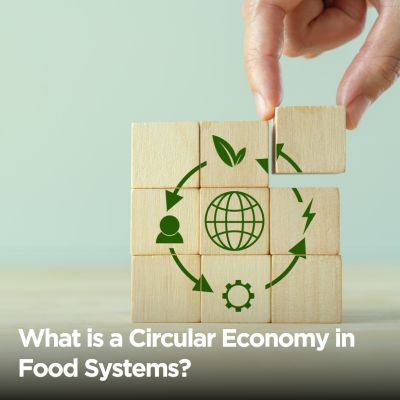Meet the future of meat – Hybrid Meat, a revolutionary innovation reshaping the landscape of our plates.
This cutting-edge concept seamlessly blends traditional and alternative protein sources, offering a new perspective on producing and enjoying meat.
In this era of food innovation, Hybrid Meat emerges as a game-changer, a sustainable and delicious evolution that’s not just about what’s on your plate now but also about the future trends in meat production.
Let’s decode the excitement behind Hybrid Meat, explore the world of alternative proteins, and glimpse into the irresistible future of food.
What is Hybrid Meat

In the ever-evolving landscape of dietary choices, hybrid meat emerges as a revolutionary concept, combining conventional animal proteins with plant-based or cultured alternatives.
Let’s delve into the definition of hybrid meat and explore its potential to address sustainability and health concerns.
1. Hybrid Meat Defined:
Revolutionary Blend: Hybrid meat represents a groundbreaking fusion, seamlessly merging traditional animal proteins with innovative plant-based or cultured counterparts.
Diverse Compositions: These hybrids can take various forms, incorporating a diverse range of ingredients to achieve a balance between the familiar and the novel.
2. Components of Hybrid Meat:
Conventional Animal Proteins: Traditional meat sources contribute to the foundational aspects of hybrid meat, maintaining the familiar taste and texture.
Plant-Based Alternatives: Integrating plant-based components introduces sustainability, adding a layer of eco-consciousness to the meat production process.
Cultured Proteins: Utilizing cultured proteins offers an alternative production method, reducing the environmental impact associated with conventional livestock farming.
3. Addressing Sustainability Concerns:
Reduced Environmental Footprint: Hybrid meat aims to contribute to sustainable practices by lessening the environmental impact often associated with conventional meat production.
Resource Efficiency: By incorporating plant-based meat and cultured alternatives, hybrid meat seeks to optimize resource usage, contributing to a more sustainable and eco-friendly food industry.
4. Health Considerations:
Balanced Nutrition: Hybrid meat provides a balanced nutritional profile, combining the benefits of animal proteins with the health-conscious attributes of plant-based components.
Reduced Fat Content: Depending on the composition, hybrid meat formulations may offer lower fat content, aligning with health-conscious consumer preferences.
5. Evolution in Protein Innovation:
The culmination of Innovations: Hybrid meat represents a culmination of advancements in protein innovation, offering consumers diverse choices that align with their ethical, health, and sustainability preferences.
Catering to Varied Preferences: With a spectrum of options, hybrid meat caters to the evolving preferences of a broad consumer base, from traditional meat enthusiasts to those seeking more sustainable and health-conscious alternatives.
As hybrid meat continues to gain traction, its definition encompasses a spectrum of possibilities, sparking conversations around sustainability, health, and the future of protein consumption.
How is Hybrid Meat Produced?
Hybrid meat, a pioneering blend of animal and alternative proteins, is crafted through an innovative production process that integrates traditional and modern technologies. Let’s explore the intricacies of producing this cutting-edge food product.
1. Integration of Animal and Alternative Proteins:
Selection of Animal Proteins: The process begins with choosing conventional animal proteins, such as those derived from poultry, beef, or other sources, depending on the desired meat type.
Incorporation of Alternative Proteins: Complementing the animal proteins, alternative sources like plant-based ingredients or cultured proteins are carefully selected to enhance sustainability and offer a diverse nutritional profile.
2. Crafting the Hybrid Composition:
Precision in Formulation: The art of hybrid meat production lies in the precise formulation of the meat blend, ensuring a harmonious balance between traditional and alternative elements.
Texture and Flavor Enhancement: Innovations in food science contribute to refining the texture and flavor of hybrid meat, aiming to replicate the sensory experience associated with conventional meat consumption.
3. Technology in Meat Production:

Protein Fusion Technologies: Cutting-edge technologies play a pivotal role in production, facilitating the seamless fusion of animal and alternative proteins.
Extrusion and 3D Printing: Advanced techniques, such as extrusion and 3D printing, are employed to create the desired meaty textures, providing a customizable approach to crafting hybrid meat products.
4. Sustainable and Efficient Processing:
Reducing Environmental Impact: Emphasizing sustainability, hybrid meat production processes often seek to reduce the environmental footprint associated with traditional livestock farming.
Efficient Resource Utilization: Integrating alternative proteins contributes to resource efficiency, aligning with the global push for more sustainable food production practices.
5. Future of Meat Production:
Continuous Innovation: As technology evolves, the production of hybrid meat is poised for continuous innovation, opening avenues for even more sustainable and health-conscious meat alternatives.
Consumer-Driven Adaptations: The future may see further adaptations in response to consumer preferences, with the potential for more diverse and customizable hybrid meat options.
The Sustainability Factor
Reducing Environmental Impact:
Hybrid meat emerges as a sustainability champion in the domain of protein production. Combining animal and alternative proteins introduces an innovative approach that can significantly mitigate the environmental impact of traditional meat production.
Land Use Efficiency:
One of the critical sustainability benefits of hybrid meat lies in its potential to optimize land use. Traditional livestock farming often demands extensive land resources, contributing to deforestation and habitat loss.
With its resource-efficient model, hybrid meat production offers a promising avenue to address these concerns by requiring less land for protein cultivation.
Mitigating Greenhouse Gas Emissions:
Greenhouse gas emissions from conventional livestock, mainly methane from digestive processes, significantly contribute to climate change.
Hybrid meat, focusing on incorporating alternative proteins, can mitigate these emissions. This reduction aligns with broader efforts to combat climate change and transition towards more climate-friendly protein sources.
Eco-Friendly Protein Choices:
Choosing hybrid meat is a conscious step towards eco-friendly protein choices. The intentional blend of animal and alternative proteins represents a commitment to sustainable agriculture practices, contributing to the overall well-being of the planet.
Sustainable Agriculture Practices:
Hybrid meat aligns with the principles of sustainable agriculture. Diversifying protein sources and exploring innovative production methods fosters a more resilient and eco-conscious approach to food production.
Climate-Friendly Proteins for the Future:
As global awareness of environmental challenges grows, adopting climate-friendly proteins becomes paramount. With its sustainable attributes, hybrid meat stands as a promising option for a future where protein consumption is intricately woven into climate-conscious choices.
Nutritional Benefits of Hybrid Meat
1. Reduced Saturated Fat Content:

One of the standout nutritional advantages of hybrid meat lies in its potential to offer protein with reduced saturated fat content.
Compared to traditional meat sources, which may contribute to elevated saturated fat intake, hybrid meat aims to provide a more balanced option, aligning with dietary recommendations for heart health.
2. Enhanced Protein Quality:
Hybrid meat is designed to optimize protein quality by combining animal and alternative protein sources.
This intentional blending ensures a well-rounded amino acid profile, contributing to enhanced protein quality that supports various bodily functions, including muscle development and repair.
3. Potential Health-Related Benefits:
Beyond addressing specific nutritional aspects, hybrid meat offers potential health-related benefits. The reduced saturated fat content, coupled with a focus on diverse protein sources, positions hybrid meat as a potential contributor to overall health and well-being.
As part of a balanced diet, it can offer consumers a valuable option for maintaining a healthy lifestyle.
4. Healthy Protein Sources:
Incorporating hybrid meat into one’s diet introduces a source of protein that aligns with health-conscious choices.
As protein is a fundamental building block for the body, opting for hybrid meat becomes a strategy for those seeking nutritious protein alternatives without compromising taste and satisfaction.
5. Nutrient-Rich Meat Options:
The nutritional benefits of hybrid meat extend to providing a spectrum of essential nutrients. From vitamins to minerals, hybrid meat aims to offer a well-rounded nutritional profile, contributing to the overall nutrient intake necessary for optimal health.
6. Balanced Dietary Choices:
Choosing hybrid meat is a step towards balanced dietary choices. Offering a blend of animal and alternative proteins provides consumers an option that harmonizes nutritional considerations, taste preferences, and health-conscious decisions.
7. Health Boost from Hybrid Meat:
Embracing hybrid meat as part of one’s diet can be a health-boosting decision. The intentional crafting of hybrid meat to deliver nutritional benefits signifies a shift towards options that cater to taste preferences and contribute positively to individual health journeys.
Culinary Versatility and Consumer Acceptance
Culinary Versatility:
The culinary world is witnessing a transformation with the advent of hybrid meat. Its unique blend of conventional animal proteins and plant-based or cultured meat alternatives introduces unparalleled culinary versatility.
Chefs and home cooks are exploring innovative ways to incorporate hybrid meat into various dishes, from traditional recipes to contemporary culinary creations.
Consumer Acceptance:
A pivotal aspect of the hybrid meat narrative is the growing acceptance among consumers. As people become more conscious of their dietary choices, embracing hybrid meat reflects a shift in consumer preferences.
The amalgamation of flavors, textures, and nutritional benefits in hybrid meat resonates with individuals seeking a balance between familiar tastes and evolving dietary trends.
Hybrid Meat in Diverse Cuisines:
One of the intriguing aspects of hybrid meat is its seamless integration into diverse cuisines. Whether it’s the heartiness of a classic burger, the savoriness of stir-fries, or the rich flavors of international dishes, hybrid meat adapts to the nuances of various culinary traditions.
Its versatility opens up a world of possibilities, allowing culinary enthusiasts to experiment with a range of global flavors.
Dietary Trends:
Incorporating hybrid meat aligns with contemporary dietary trends centered around sustainability, health-conscious choices, and culinary innovation.
It stands as a testament to the evolving landscape of food preferences, where consumers actively seek options catering to their taste buds and values. Hybrid meat emerges as a compelling choice in this dynamic dietary environment.
Innovative Cooking with Hybrid Meat:
Chefs and home cooks are embracing the challenge of innovative cooking with hybrid meat.
From crafting gourmet masterpieces to reinventing everyday meals, the culinary community is leveraging the diverse qualities of hybrid meat to create memorable dining experiences—this adaptability positions hybrid meat as a star ingredient in the ever-evolving world of culinary exploration.
Consumer Preferences:
Consumer preferences are evolving, and hybrid meat resonates with those who prioritize a flexible and inclusive diet.
The acceptance of hybrid meat reflects a broader shift in how consumers perceive and engage with alternative protein sources, marking a significant stride towards a more diverse and sustainable food future.
Culinary Diversity:
Hybrid meat contributes to the expanding tapestry of culinary diversity. Its ability to seamlessly integrate into various dishes and its culinary benefits enriches the spectrum of choices available to consumers.
The embrace of culinary diversity, propelled by hybrid meat, showcases the dynamic nature of contemporary food culture.
Culinary Exploration with Hybrid Meat:
Embracing hybrid meat becomes a gateway to culinary exploration. Its versatile nature invites individuals to embark on a culinary journey where traditional boundaries are pushed and new flavors are discovered.
Culinary exploration with hybrid meat is not just a meat market trend; it’s a flavorful adventure that reflects the changing tastes of a discerning and adventurous consumer base.
Conclusion
In wrapping up our journey into the world of Hybrid Meat, here’s the juicy truth: it’s not just a trend; it’s the future sizzling on your plate.
These key takeaways paint a picture of Hybrid Meat as more than a sustainable option – it’s a nutrition-packed, versatile game-changer.
As we wrap up our insights, Hybrid Meat stands tall, not just as a meal but as a beacon of sustainable nutrition, navigating us toward the exciting future of meat innovation.
So, get ready to savor a taste of the future – because Hybrid Meat is here to stay, shaping how we eat for years to come.





























